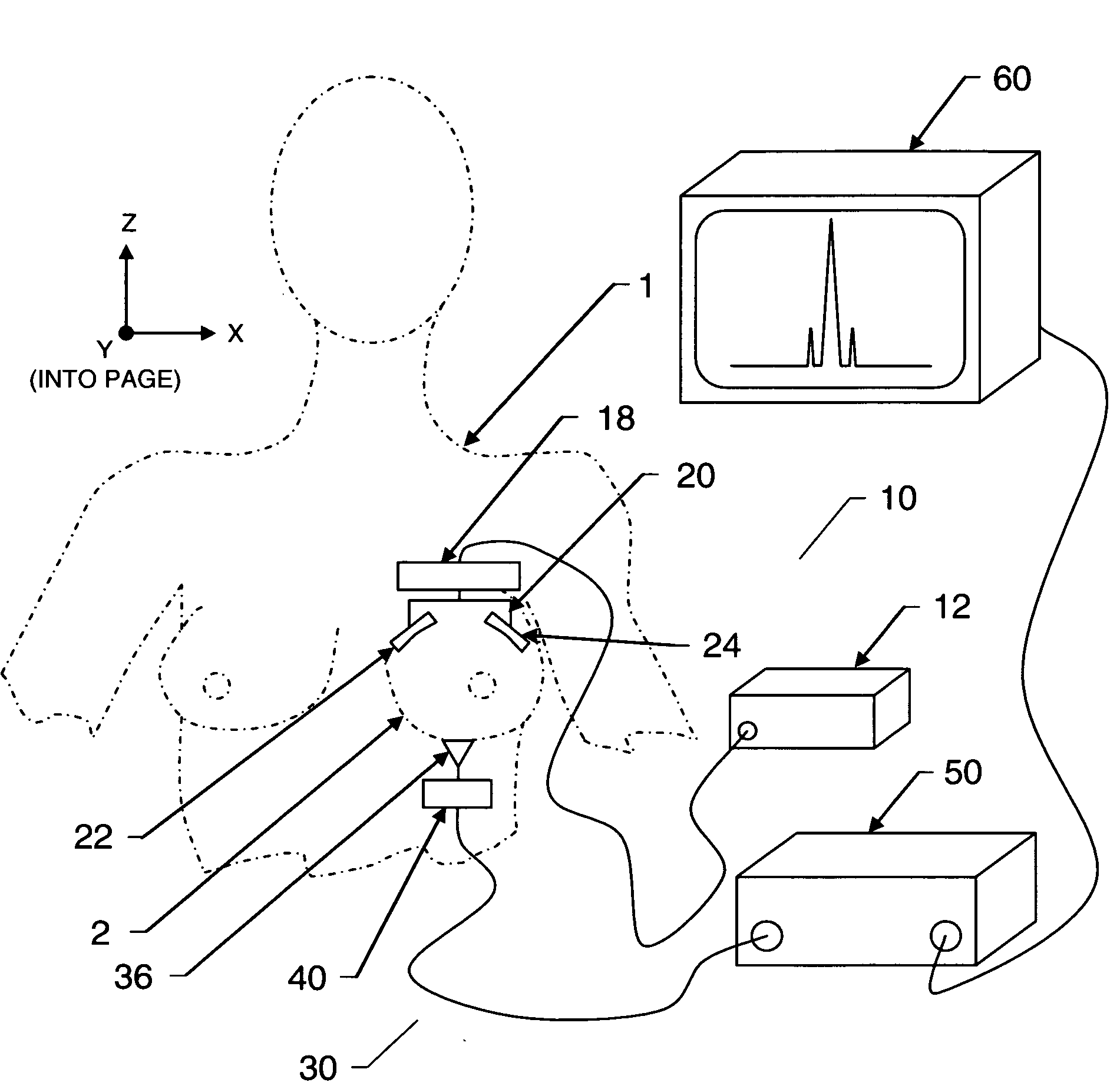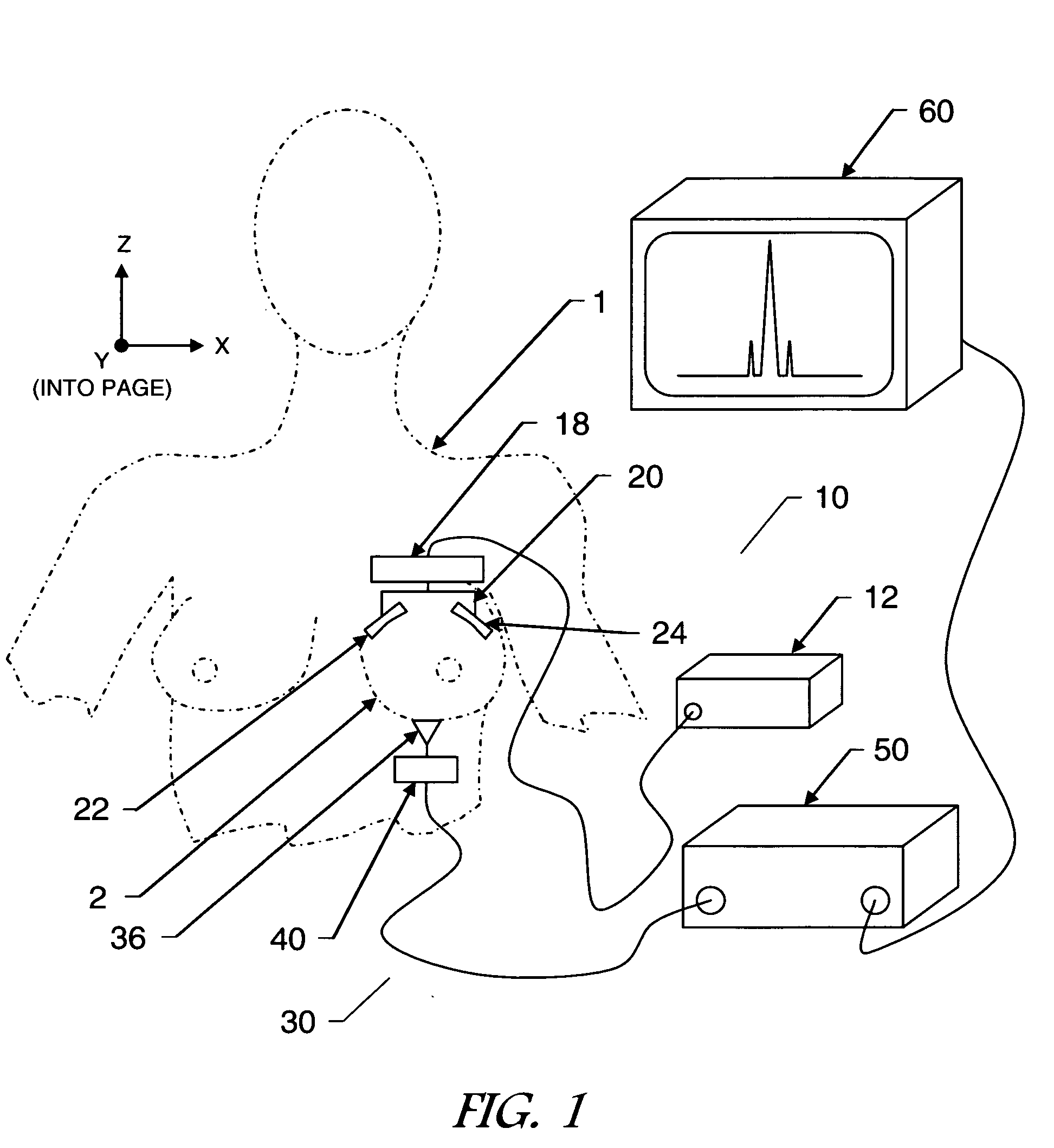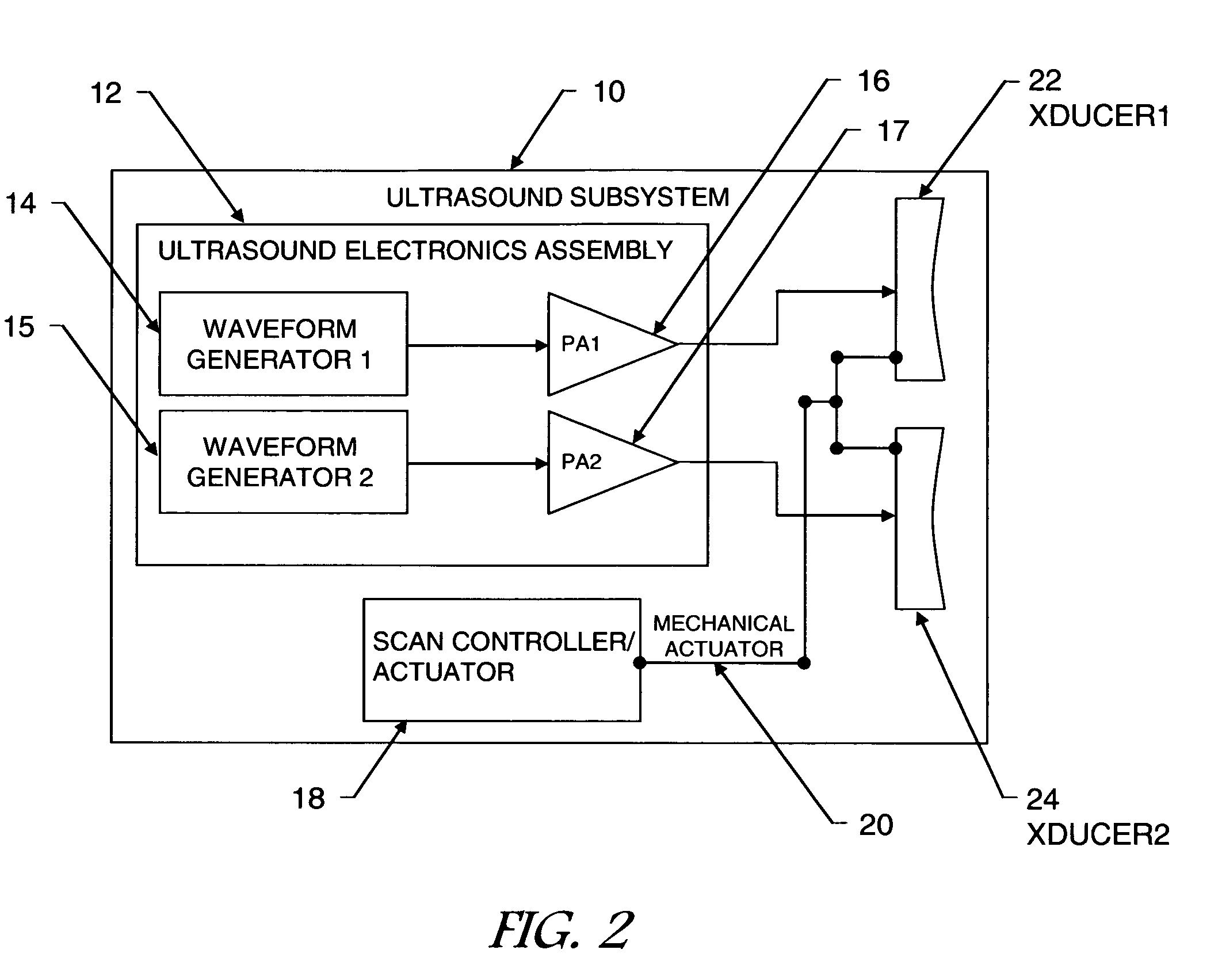Multi-modality system for imaging in dense compressive media and method of use thereof
a dense compressive media and multi-modality technology, applied in the field of imaging in dense compressive media, can solve the problems of lack of sensitivity or resolution of other methods, clinical physical examination cannot identify the nature of lumps, and each prior art method and/or device possesses significant disadvantages, etc., to achieve superior penetration and resolution characteristics, superior penetration and detection capacity of microwave detection and imaging, and superior excitation capability of resultan
- Summary
- Abstract
- Description
- Claims
- Application Information
AI Technical Summary
Benefits of technology
Problems solved by technology
Method used
Image
Examples
Embodiment Construction
[0043]The following description is provided to enable any person skilled in the art to make and use the invention and sets forth the best modes contemplated by the inventor of carrying out his invention.
[0044]Referring now to the drawings, FIG. 1 shows the orientation of the system with respect to the patient 1 and the imaging target breast 2 in one preferred embodiment of the present invention. An ultrasound subsystem 10 and a microwave imaging subsystem 30 are employed in combination to detect and diagnose tumors in the breast 2. A first ultrasound transducer 22, a second ultrasound transducer 24 and a microwave antenna 36 are oriented with respect to the target breast 2 of the patient 1. A radio frequency transceiver 40 generates and transmits microwave signals to the microwave antenna 36. The microwave antenna 36 transmits microwaves into the target breast 2. Reflected microwaves are collected by the microwave antenna 36 and received by the radio frequency transceiver 40. A comp...
PUM
 Login to View More
Login to View More Abstract
Description
Claims
Application Information
 Login to View More
Login to View More - R&D
- Intellectual Property
- Life Sciences
- Materials
- Tech Scout
- Unparalleled Data Quality
- Higher Quality Content
- 60% Fewer Hallucinations
Browse by: Latest US Patents, China's latest patents, Technical Efficacy Thesaurus, Application Domain, Technology Topic, Popular Technical Reports.
© 2025 PatSnap. All rights reserved.Legal|Privacy policy|Modern Slavery Act Transparency Statement|Sitemap|About US| Contact US: help@patsnap.com



